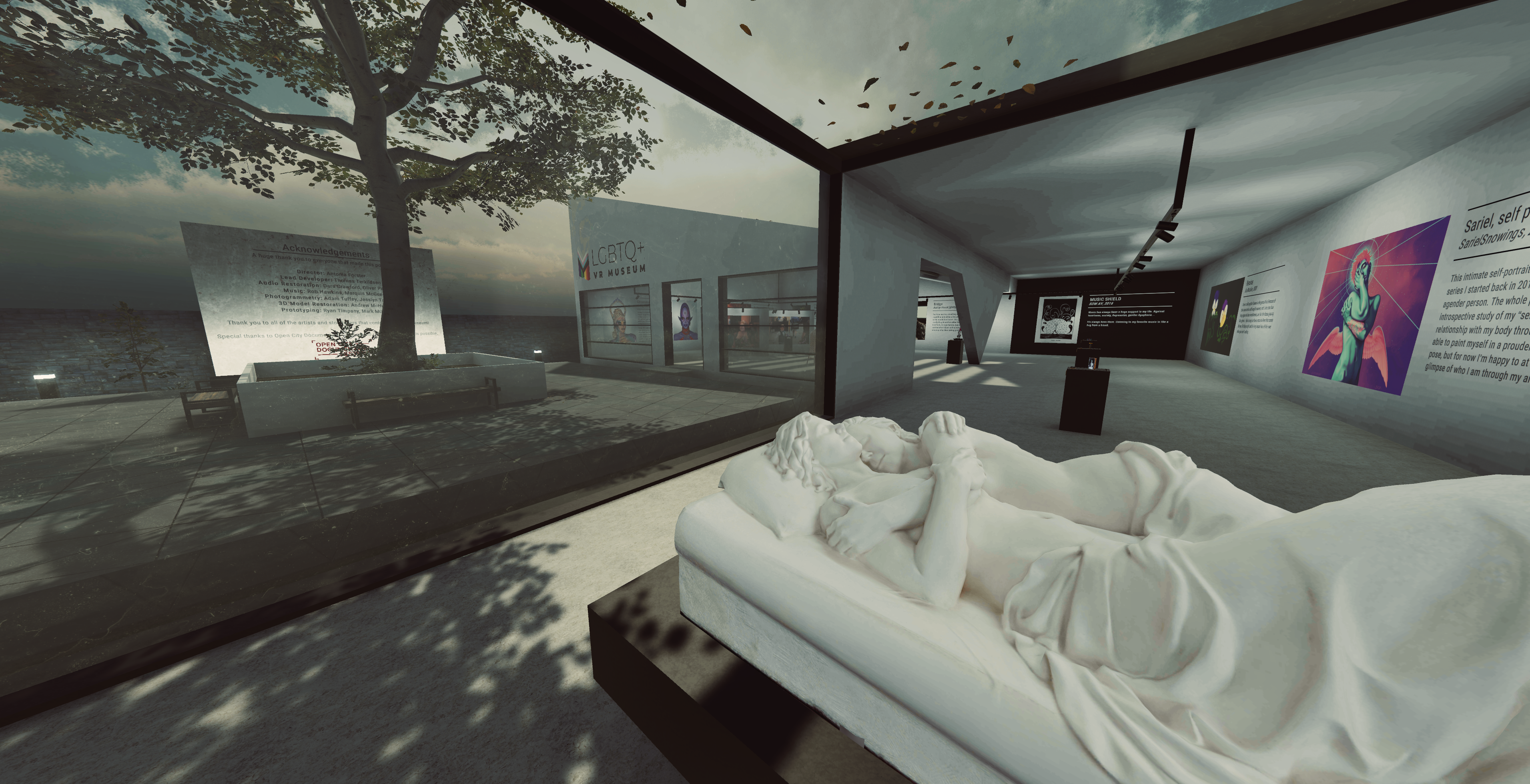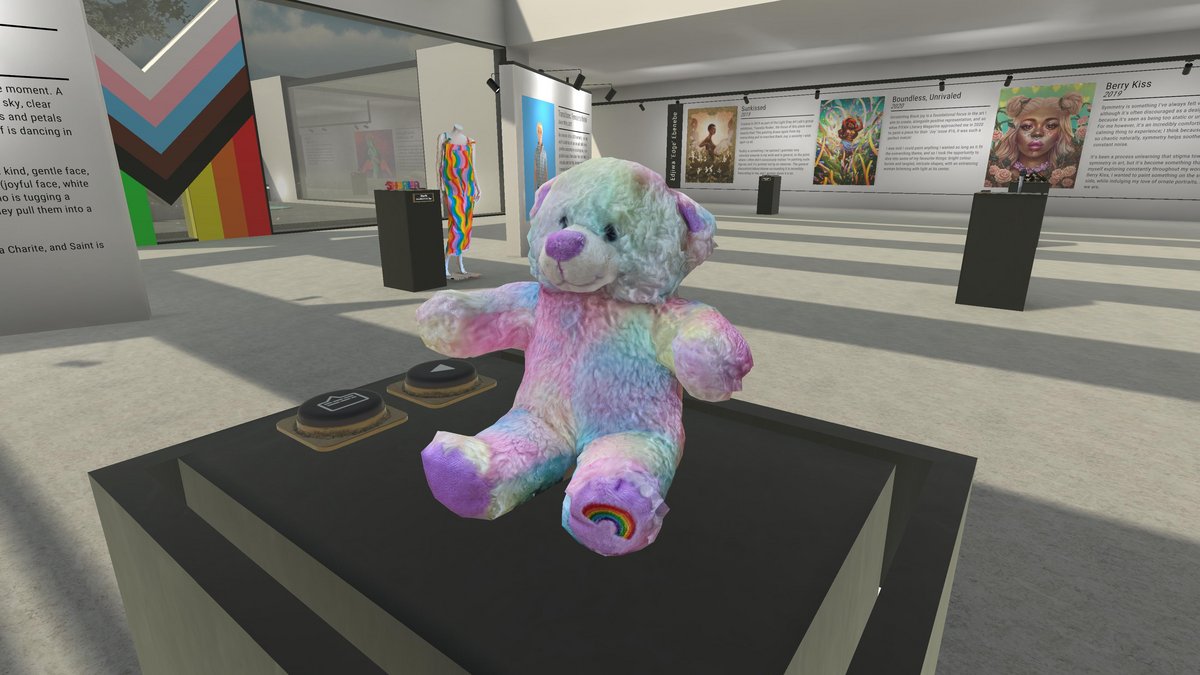AU researcher behind the world’s first LGBTQ+ virtual reality museum
Thomas Terkildsen does not consider himself an artist, but he has a message, and he knows a lot about how virtual reality technology can make narratives even stronger and how to measure emotions. His work has made such a big impression that he has been nominated for an award at the prestigious Tribeca Film Festival.



When did you last visit a museum where you could pick up an exhibited object, turn it around and throw it up in the air? Although everything takes place by means of controllers, as it is a virtual reality museum, it has exactly the same architecture and layout as a physical museum. Museums are designed to preserve important stories, and there is especially one marginalised group whose stories often remain personal without being shared publicly and preserved for the future. Thomas Terkildsen from Aarhus University therefore decided to create the world’s first VR museum for the LGBTQ+ environment together with his colleague Antonia Forster.
For this, they have now been nominated for an award at the prestigious Tribeca Film Festival in New York in the Immersive category called New Voices. It is an award that honours artists who build bridges between technology and storytelling, bring new perspectives to the storytelling and give it an artistic language. And the exhibition has a lot of stories to offer.
About the festival
The Tribeca Film Festival was founded by Robert De Niro and Jane Rosenthal in 2002. They wanted to commemorate the victims after the terror attack on the World Trade Center on 11 September 2001 and stimulate economic growth in southern Manhattan.
Each year, the festival hosts over 600 screenings with approximately 150,000 participants and presents awards to independent artists in 23 juried competition categories.
The museum is dedicated to celebrating the stories and artwork of LGBTQ+ people by preserving their personal stories. The museum contains 3D scans of touching personal artefacts selected by people in the LGBTQ environment and accompanied by their stories told in their own words.
“We wanted people from the LGBTQ+ environment to tell their life stories through an object that has meant a lot to them. So we asked them to send us a physical object. And we received a large number of various artefacts, from a microphone to a teddy bear, wedding shoes and nail polish”, says Thomas Terkildsen, who works at the Department of English at Aarhus University.
To create a museum that was as close to reality as possible, Thomas Terkildsen and Antonia Forster not only wanted to recreate the submitted objects in 3D and draw a copy in a program. They wanted to create exact reproductions of the objects with every little detail bearing witness to a life story.
“We wanted it to be about exactly that object. So we have taken photos from all angles and made a photo-scanned 3D model which looks 100 % like the object. For us, it’s part of the value that you can see that the nail polish has been used.”
With a VR headset, you can grab the objects, and then you can press a button and hear the owners of the objects explain why this particular object is important to their life story. The stories they are telling are quite strong and emotional, and it is that emotion which Thomas Terkildsen wants to measure. Therefore, when the researchers are going to Tribeca in June, they will have added an extra element to the exhibition.
From a sense of fear to compassion
Thomas Terkildsen is affiliated with the research project APEX of Fear at Aarhus University, where he develops technology to measure fear. At the exhibition at Tribeca, however, he will be measuring the museum visitors’ emotional reactions to the museum experience.
“In addition to VR equipment, measuring equipment will be attached to their hands, so that we can measure how they’re affected by the stories they hear, physically and emotionally. When they’re affected, it generates certain effects in the room they’re in. We create some particles in the air which change colour depending on the extent to which the stories trigger emotions in the visitors. So the particles become bright pink/purple if the emotions are strong and white if no emotions are triggered.
The message is clear. The stories are intended to give the museum visitors an understanding of different lifeworlds, and with this understanding comes compassion.
“It’s important for us to show that there are people behind the stories, and that we all have the same goal of wanting to live a good life. We want to contribute to developing the necessary understanding of each other that enables us to have compassion for each other. And then make sure that the stories can be told in public, so that everyone has access to them.”
The exhibitions and the award ceremony take place on 8-19 June in New York. There will also be two Danish world premieres on the programme. Annette K. Olesen’s drama: Ingen kender dagen with Trine Dyrholm in the leading role and Gabriel Bier Gislason’s debut film Natten har øjne.
When the VR museum exhibition has premiered at Tribeca, anyone with a VR headset at home will be able to see the exhibition online. This article will be updated with a link.
Until then, you can read more about the world’s first virtual reality museum for LGBTQ+ stories here: https://www.tribecafilm.com/films/lgbtq-vr-museum-2022
Contact
Thomas Terkildsen
Email: tt@cc.au.dk
Mobile: 53381550

